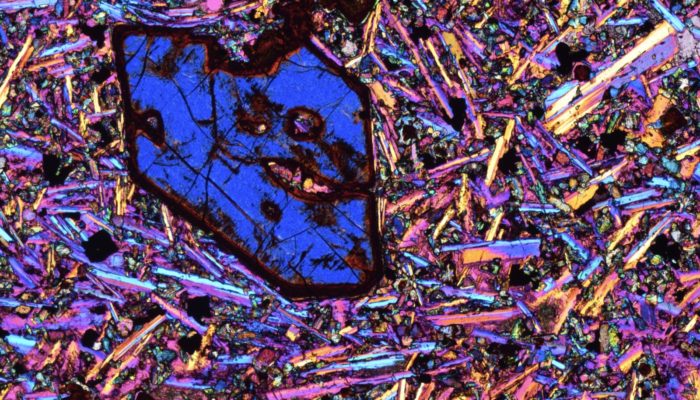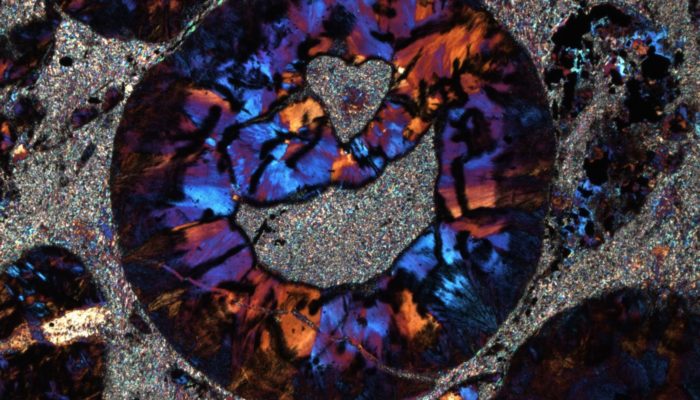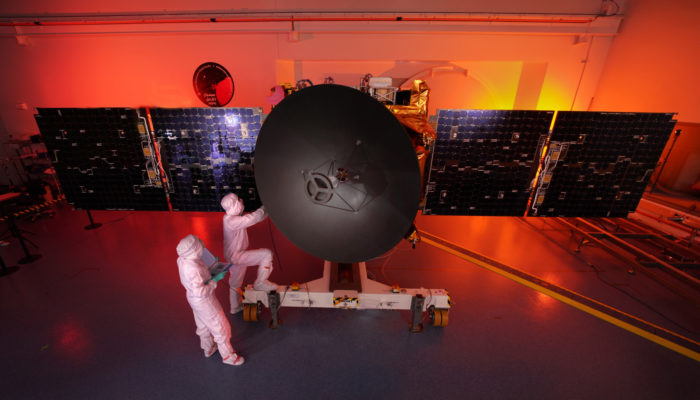Hello Josh, thankyou for talking with us! Before we take off, could you tell us a little about yourself and your research? Hi Simon, thanks for inviting me! I’m a PhD student at the Swedish Institute of Space Physics (IRF) and Uppsala University, just started my third year. My research is focused on Saturn’s ionosphere (the region of the upper atmosphere with a significant amount of ch ...[Read More]
A Mission to Mars
February 2021 is an important month for Martian missions, with three arriving at our planetary neighbour within 10 days. Many people have been following the USA’s NASA Perseverance mission, as they landed the new Perseverance rover, with it’s specially designed Ingenuity helicopter in the Jezero Crater in the last 24 hours. Earlier this month the Chinese mission Tianwen-1 also entered ...[Read More]
Imaggeo On Monday: Blue Olivine in an unusual basalt

Blue Olivine set in a matrix of pyroxene, magnetite and plagioclase in a basalt collected by the photographer, Bernardo Cesare, on the shore of the Sea of Galilee, Israel. Polarized light photomicrograph. Crossed polarizers and red tint plate. Width c. 2.7 mm. Who may have been throwing this stone a couple millennia ago? Description by Bernardo Cesare, after the description on imaggeo.egu.e ...[Read More]
Imaggeo On Monday: Emoji from meteorites; impact spherule

This is a crossed polarized light photomicrograph of an impact spherule; a small mineralisation made when a meteorite hits the Earth and melts the rock at the point of impact, from Barberton Greenstone Belt, in South Africa. These spherules are the only remnants of Early Earth’s meteorite impact history, from between of 3.2 and 3.5 billion years ago. In this photo you can see the K-feldspar ...[Read More]


